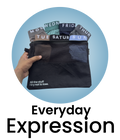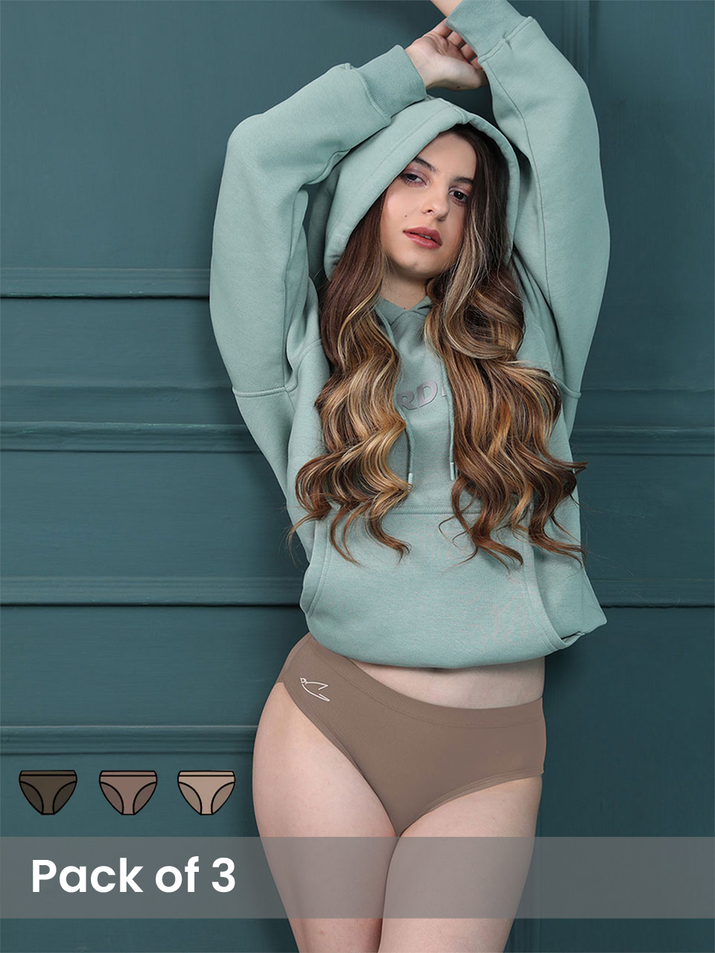Gen Z craves authenticity and individuality. Fast fashion's limited designs often fall short. Freecultr steps in, leveraging a creator-driven marketplace to disrupt traditional apparel. Imagine a platform where independent artists directly influence trends, providing a constantly refreshed catalog that dwarfs mass-produced options. We’ll explore how Freecultr's unique model, built on community engagement and on-demand printing, allows for hyper-personalization and rapid response to emerging aesthetic preferences, offering a design variety unmatched by established brands struggling with rigid supply chains and seasonal collections. This analysis will highlight the key elements of Freecultr's approach, including its artist onboarding process, curation algorithms. Production efficiencies, to demonstrate its competitive advantage in catering to Gen Z's diverse tastes.

Understanding Gen Z's Design Preferences
Gen Z, born roughly between 1997 and 2012, represents a unique generation with distinct preferences shaped by their digital-native upbringing. Unlike previous generations, Gen Z has grown up immersed in technology, social media. Instant communication. This constant exposure has profoundly influenced their aesthetic sensibilities and purchasing habits, particularly when it comes to fashion and self-expression. Gen Z values:
- Authenticity: They appreciate brands that are transparent and genuine in their messaging.
- Individuality: They seek products and experiences that allow them to express their unique identities.
- Sustainability: They are environmentally conscious and prefer brands that prioritize ethical and sustainable practices.
- Inclusivity: They value diversity and inclusivity in all aspects of life, including fashion and design.
Their design preferences often lean towards:
- Bold colors and patterns: They are drawn to vibrant and eye-catching designs.
- Retro and vintage aesthetics: They appreciate the nostalgia of past decades.
- Minimalism: They also embrace clean and simple designs that are easy to comprehend and navigate.
- Customization: They like the ability to personalize products and make them their own.
The Freecultr Approach: A Design-First Philosophy
Freecultr is a brand that has strategically positioned itself to cater to the discerning tastes of Gen Z. Their core philosophy revolves around a design-first approach, meaning that design is not an afterthought but a central element in every product they create. This approach manifests in several key ways. Firstly, Freecultr emphasizes collaboration with a diverse range of artists and designers. This ensures a constant influx of fresh perspectives and innovative ideas, resulting in a wider variety of designs compared to brands that rely solely on in-house teams. They actively seek out emerging talent and provide a platform for them to showcase their work, which resonates strongly with Gen Z's desire to support independent creators. Secondly, Freecultr leverages data analytics to grasp Gen Z's evolving preferences. They constantly monitor trends on social media, examine customer feedback. Track sales data to identify emerging patterns and adapt their designs accordingly. This data-driven approach allows them to stay ahead of the curve and offer products that are relevant and appealing to their target audience. Finally, Freecultr empowers Gen Z to participate in the design process. They often run contests and polls on social media, inviting customers to submit their own designs or vote on their favorite options. This not only generates excitement and engagement but also ensures that the products they offer are truly reflective of what Gen Z wants.
Design Variety: How Freecultr Delivers
Freecultr offers a superior level of design variety to Gen Z consumers through a multi-faceted strategy:
- Curated Collections: They organize their products into themed collections based on current trends, artistic styles, or cultural events. This makes it easier for customers to discover designs that align with their interests. For example, a collection might feature designs inspired by vintage video games, street art, or a particular music genre.
- Artist Collaborations: Partnering with independent artists and designers brings unique and diverse perspectives, resulting in a wide array of design styles. Each artist brings their own individual flair, contributing to a constantly evolving catalog of designs.
- Print-on-Demand Technology: Freecultr utilizes print-on-demand (POD) technology, which allows them to produce products only when an order is placed. This eliminates the need to hold large inventories, enabling them to offer a vast selection of designs without the risk of unsold stock.
- Customization Options: They offer customization options that allow customers to personalize products with their own text, images, or designs. This empowers Gen Z to express their individuality and create truly unique pieces.
Print-on-Demand (POD) Explained
Print-on-demand (POD) is a business model where products are only printed when an order is received. This contrasts with traditional retail, where products are manufactured in bulk and stored in warehouses until they are sold. The POD process typically involves the following steps:
- A customer places an order for a product with a specific design.
- The order is sent to a POD provider.
- The POD provider prints the design onto the product.
- The product is shipped directly to the customer.
POD offers several advantages for both businesses and consumers:
- Low upfront costs: Businesses don't need to invest in expensive equipment or large inventories.
- Wide product selection: Businesses can offer a vast range of products and designs without the risk of unsold stock.
- Customization options: POD allows for personalized products, catering to individual preferences.
- Reduced waste: Products are only printed when they are needed, minimizing waste and environmental impact.
For Freecultr, POD is a crucial enabler of their design variety strategy. It allows them to offer a seemingly limitless selection of designs without incurring the costs and risks associated with traditional manufacturing and warehousing.
Comparing Freecultr to Traditional Retailers
Traditional retailers often struggle to keep up with Gen Z's ever-changing tastes due to their reliance on traditional manufacturing and distribution models. They typically produce large quantities of a limited number of designs, which can quickly become outdated. Here's a comparison:
| Feature | Freecultr | Traditional Retailers |
|---|---|---|
| Design Variety | Extensive, driven by artist collaborations and POD. | Limited, based on seasonal trends and mass production. |
| Customization | Offers personalization options. | Limited or no customization. |
| Inventory Management | Print-on-demand, minimal inventory. | Large inventories, risk of unsold stock. |
| Speed to Market | Quickly adapts to new trends. | Slower to respond to changing preferences. |
| Artist Collaboration | Actively seeks out and partners with independent artists. | Relies primarily on in-house design teams. |
| Sustainability | Potentially more sustainable due to reduced waste. | Potentially less sustainable due to mass production and unsold stock. |
As the table illustrates, Freecultr's business model is specifically designed to address the limitations of traditional retail and cater to the unique needs and preferences of Gen Z.
Real-World Applications and Use Cases
Consider the following scenarios:
A Gen Z student wants a t-shirt that reflects their passion for a niche video game. They can easily find a design on Freecultr that caters to their specific interest, or even create their own custom design.
A group of friends wants to create matching hoodies for a special event. They can use Freecultr's customization tools to design hoodies that are unique and personalized to their group.
An aspiring artist wants to showcase their work and earn money. They can partner with Freecultr to sell their designs on a wide range of products, reaching a global audience. These examples demonstrate how Freecultr's design variety and customization options empower Gen Z to express their individuality, support independent creators. Find products that perfectly match their unique needs and interests.
Conclusion
Freecultr's success in resonating with Gen Z's demand for diverse designs isn't just about aesthetics; it’s a strategic understanding of their values and consumption habits. We've seen how their design philosophy, incorporating trends like bold graphics and sustainable practices, directly addresses Gen Z's desire for self-expression and ethical consumption. They constantly refresh their collections, tapping into viral trends like the current obsession with retro gaming and anime-inspired art. To capitalize on this momentum, Freecultr should double down on collaborative designs with Gen Z artists and influencers, creating limited-edition collections that generate buzz and exclusivity. Imagine a capsule collection designed in partnership with a popular TikTok creator – the potential reach is immense! By continuing to prioritize inclusivity, sustainability. Authentic self-expression through design, Freecultr is poised to become the go-to brand for Gen Z's innerwear needs. Remember, it's not just about selling underwear; it's about empowering a generation to feel confident and expressive in their own skin.
More Articles
Why are Freecultr prints more modern than Jockey’s classic styles?
Is Freecultr’s eco-friendly fabric better for the planet?
Why do athletes pick Freecultr over traditional briefs?
How does Freecultr avoid chafing unlike other brands?
FAQs
So, Freecultr's all about design variety for Gen Z, huh? But how exactly?
Good question! Freecultr isn't your average brand churning out the same old stuff. They grasp Gen Z's craving for unique expression. They constantly collaborate with independent artists and designers from all over, meaning you get a constantly rotating selection of fresh, original designs you won't see everywhere else.
Okay, 'unique' is great. What kind of designs are we talking about? Is it just, like, abstract blobs or something?
Nah, not just abstract blobs (though maybe some cool ones!). They cover a huge range. Think everything from bold graphic prints and witty slogans to intricate illustrations and designs inspired by pop culture, music, art. Even social issues. They try to cater to different aesthetics and interests within Gen Z.
Why bother with so many different artists? Doesn't that make things complicated?
It might be more complicated. It's worth it! By working with a diverse pool of talent, Freecultr taps into a wider range of perspectives and styles. This allows them to offer a more diverse selection of designs that resonate with different subgroups within Gen Z. Plus, it supports independent creators, which is a win-win!
What if I have super specific tastes? Will I even find anything I like?
That's the beauty of it! Because they're always adding new designs and collaborating with new artists, the chances of finding something that perfectly matches your unique aesthetic are pretty high. It's way more likely than finding something generic that everyone else is wearing.
Is the variety just for clothes, or does it extend to other stuff too?
While apparel is a big part of it, the design variety often extends to accessories, home goods. Other lifestyle products. So you can find unique designs to express yourself beyond just what you wear.
So, , Freecultr is like a curated marketplace for Gen Z designs?
Exactly! Think of it as a place where independent artists and designers can showcase their work and Gen Z can discover fresh, original designs that reflect their individuality. It's a much more personal and engaging experience than just buying from a big box store.
Does this focus on variety mean the quality suffers?
Nope! While variety is key, Freecultr usually focuses on quality materials and production methods, ensuring the designs look good and last. They are not just about trendy designs; they also aim to make sure you are getting a good product.






